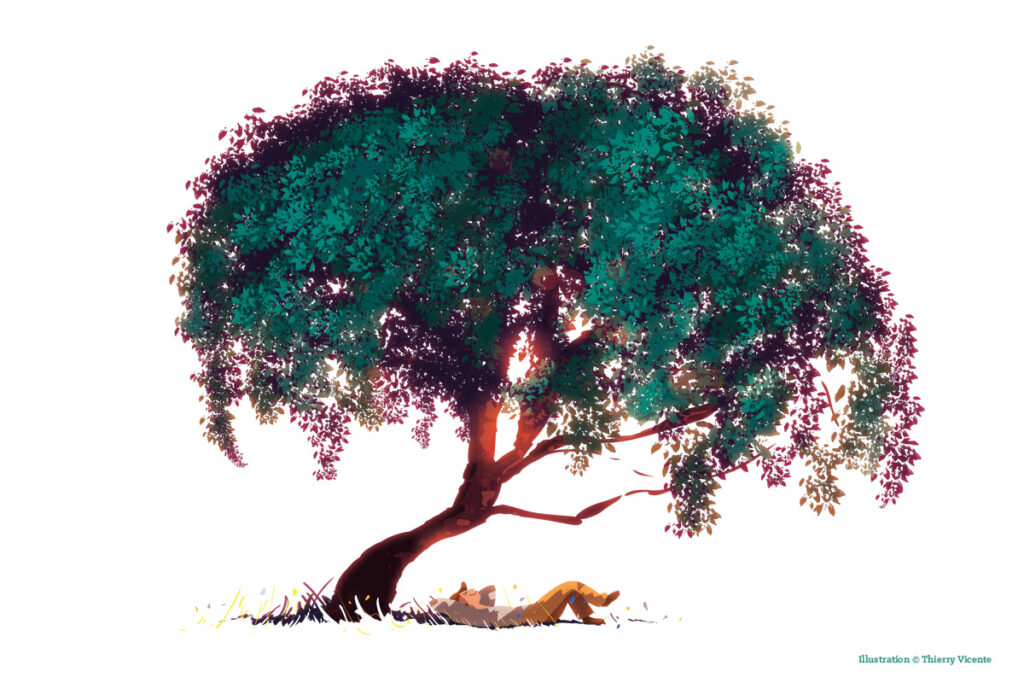[LUM#7] Beauty unveiled
Faces, landscapes, works of art... Both universal and relative, beauty conceals many mysteries. To unravel them, cognitive science has put forward an enlightening theory: we find beautiful what is easy for our brain to process.

The sheer pleasure of contemplation... We experience it so often that we take it for granted. Yet the feeling of beauty is astonishing. Faced with an object, a face, a scene, here we are, feeling satisfaction. But what is it that triggers our secretion of opioids and cannabinoids, the molecules of pleasure? Philosophers, art historians, psychologists and neuroscientists have probed this mystery. Today, biologists specializing in the evolution of species are taking up the question. Could the mechanisms of natural selection explain our sense of beauty?
Universal beauty
One thing is certain: beauty has a universal dimension. We humans share many visual preferences. " Since the beginning of the 20th century, experimental psychology and neuroscience have largely demonstrated the constants in what humans find beautiful," explains Julien Renoult, a biologist specializing in evolutionary aesthetics (L'évolution de l'esthétique : une revue des modèles, in Esthétique et neurosciences, 2016). For example, there is a strong link between the time newborns spend staring at faces or paintings, and the level of beauty felt by adults when faced with these same objects. And this is independent of the cultures of origin.
What do we all tend to like to contemplate? First, certain design elements. We prefer symmetry and roundness. " Visual scenes with spatial statistics similar to those found in nature are also considered more beautiful ," explains the researcher from the Center for Functional and Evolutionary Ecology. Such is the case with fractals, identical patterns at any scale. Mountains, trees, ferns, river networks and clouds are all examples. " Artists tend to create beauty in their work by mimicking the level of fractality found in nature," says Julien Renoult.
So much for "objective" criteria. But how do we explain the fact that beauty is expressed differently in different people? There are other, more subtle, constants of beauty that appeal to the cognitive system and memory of each individual. Thus, "prototypes" delight our eyes: if a robin surpasses an ostrich in beauty for most of us, it's because it's representative of our "bird" mental category... which varies from person to person. What's familiar also seems more beautiful. " This works both visually and audibly: having already been exposed to a melody increases our chances of finding it beautiful ," points out Julien Renoult.
Information flow
That's what makes it so pleasurable to contemplate. At first glance, these parameters may seem disparate. But they have one thing in common. " They are easy for our brains to encode, enabling rapid information processing. Beauty is the fluid circulation of information in the brain ", sums up Julien Renoult (Beauty lies in the efficient coding of the beholderin The royal society, 2016).
This would explain the success of symmetry and fractals: redundant information requires little brain energy to process. "Rounding is a shape that offers strong predictability, with its continuity in the line. As for the nature-like designs, they correspond to ecological expectations: there's no conflict between what the brain expects and what it sees", explains Julien Renoult. Similarly, the fact that an object resembles the mental category in which it is classified makes it easy to categorize. This theory of "efficient coding" offers us a global and coherent explanation of beauty.
Fewer surprises
The question remains: why does rapid neural processing trigger the secretion of pleasure neurotransmitters? It's easy to imagine the evolutionary advantage of such a discharge of well-being. " Appreciating that information is easy to process encourages us to evolve in an environment offering fewer surprises. And therefore more conducive to survival and reproduction ", explains Julien Renoult. All the more so as the processing of information by the brain is very energy-intensive.
Next question for evolutionary aesthetics: is there a universal beauty between species? " We can imagine it. We are often charmed by communication signals that have evolved to be attractive to other species: birdsong, the peacock's tail. The aesthetic preferences of humans appeal to other animals: chickens, like us, prefer rounded shapes ", says Julien Renoult. And if the efficient coding theory is convincing in humans, there's no reason why it shouldn't work in animals... since even invertebrates release opioids and cannabinoids when their neuronal flow is fast. A "general theory of beauty" that would not, of course, diminish the grace of experience.
UM podcasts are now available on your favorite platforms (Spotify, Deezer, Apple podcasts, Amazon Music...).